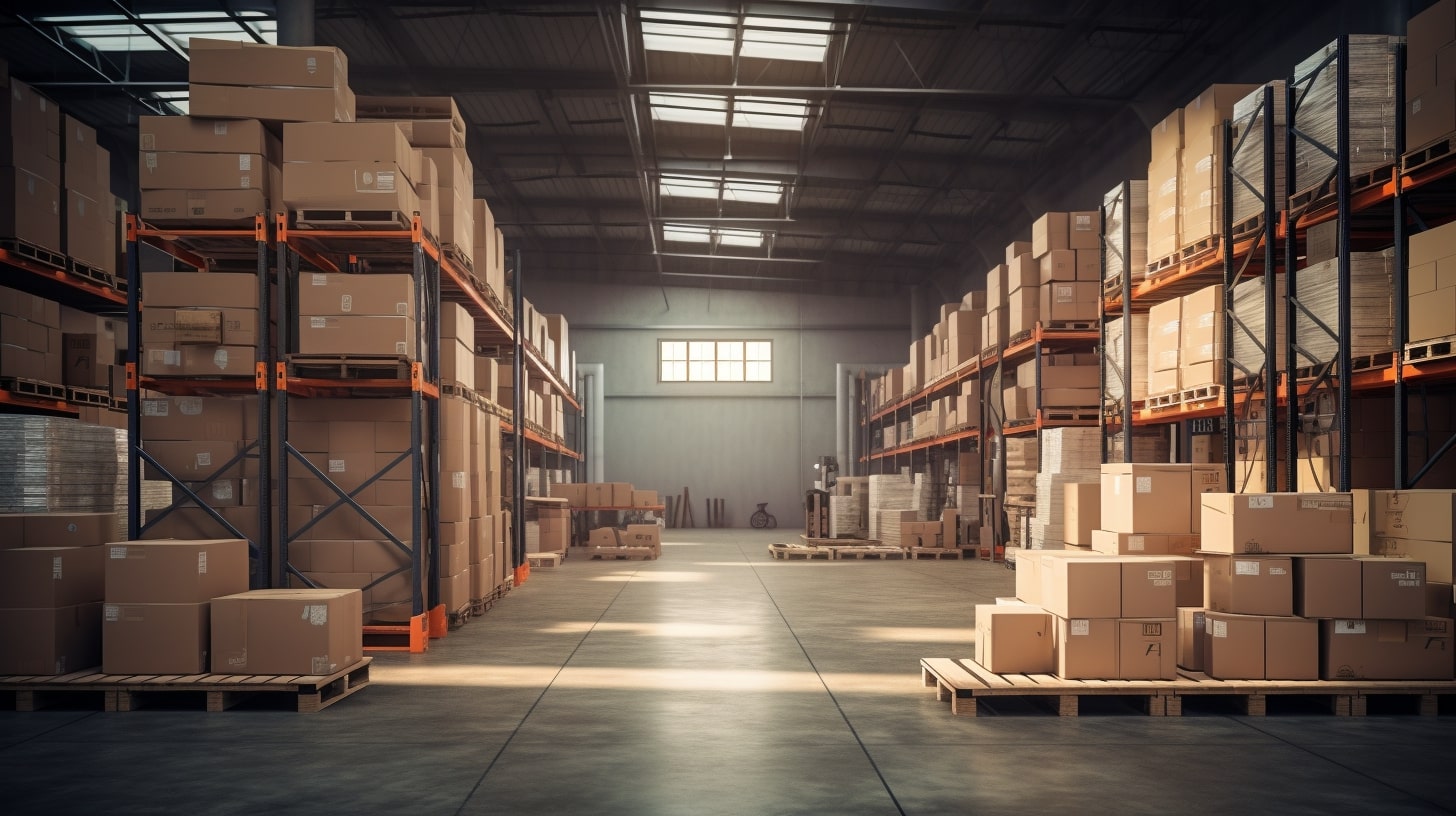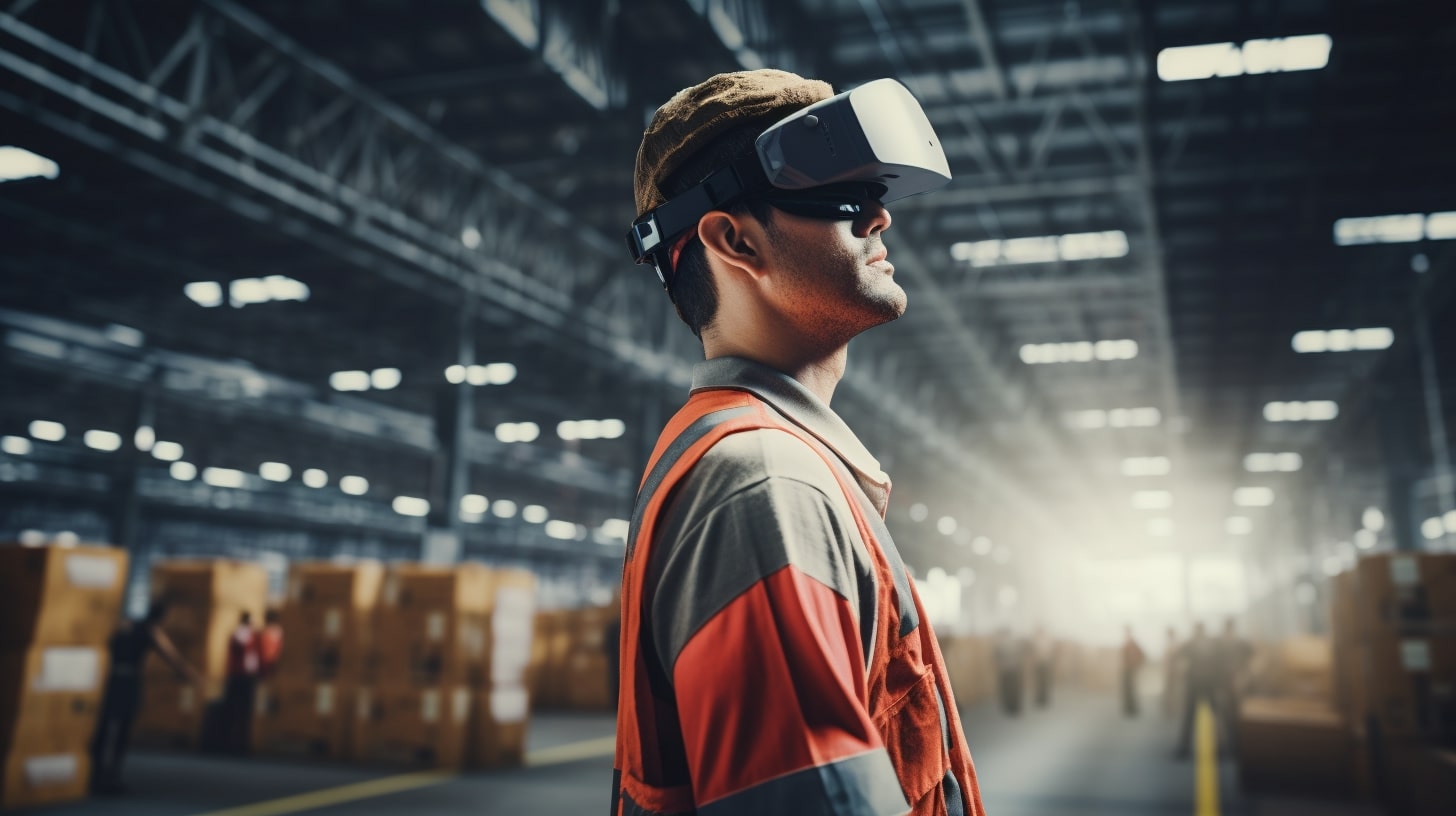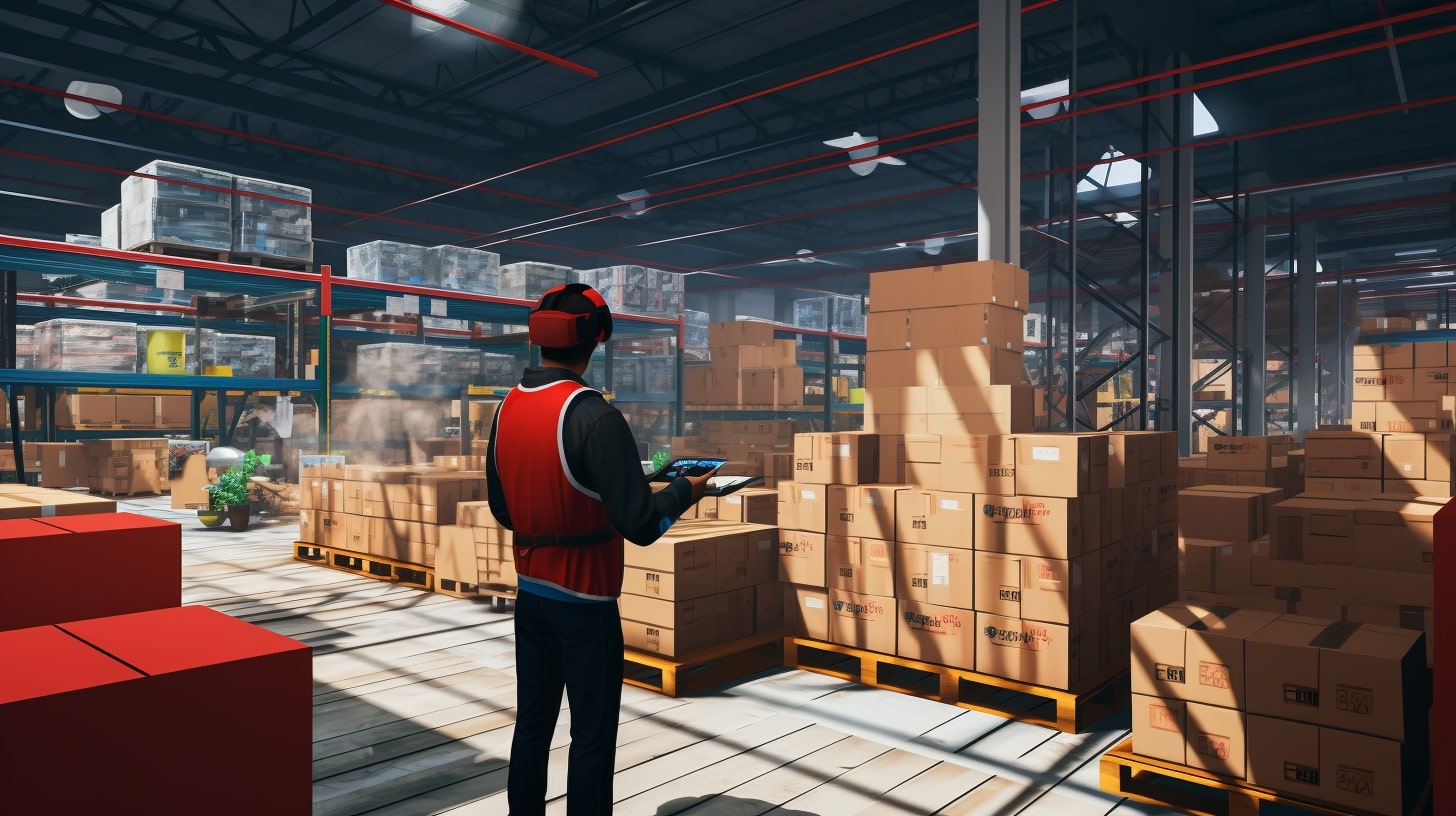In the ever-evolving landscape of logistics and supply chain management, the role of warehouse personnel is crucial in ensuring the smooth flow of goods from production to consumer.
Traditional warehouse training methods often involve lengthy classroom sessions and on-the-job training, which can be time-consuming and costly.
However, with the advent of virtual reality (VR) technology, there has been a paradigm shift in the way warehouseman training is conducted. Before delving into the VR realm, it becomes crucial to emphasize the significance of Virtual Reality companies Industrial Training.
This cutting-edge solution empowers businesses and organizations to provide their staff with highly realistic and immersive training experiences.
In this blog, we will explore the transformative impact of VR on warehouse training, highlighting its benefits, applications, and the future it promises for this essential industry.
Current State of
VR Training for
Warehouse managment

In order to understand the challenges associated with conventional warehouse training methods, it’s vital to understand the potential of VR.
Traditional training typically involves a combination of classroom instruction and hands-on experience. While on-the-job training is valuable, it can be resource-intensive and may pose risks, especially in high-stakes environments where errors can lead to significant consequences.
Moreover, the logistics industry is constantly evolving, requiring warehouse personnel to adapt to new technologies, workflows, and safety protocols. This demand for continuous learning makes it imperative for companies to explore VR training approaches that are both efficient and effective.
Promise of Virtual Reality for Warehouseman Training
Virtual Reality offers a revolutionary solution to the challenges faced by traditional training methods. By immersing trainees in realistic, simulated environments, VR enables warehouse personnel to undergo training in a controlled and safe space. Let’s explore the key advantages of incorporating VR into warehouseman training:
Realistic Simulations
VR technology creates highly realistic simulations that replicate the warehouse environment, complete with shelves, pallets, and various products. Trainees can interact with these virtual elements, gaining a practical understanding of their roles and responsibilities.
Hands-On Experience
VR provides a hands-on learning experience without the need for a physical warehouse. Trainees can practice tasks such as inventory management, order picking, and equipment operation in a virtual setting, enhancing their skills in a risk-free environment.
Safety Training
Safety is a top priority in warehouses, where accidents can result in serious injuries or damage to goods. VR allows for immersive safety training scenarios, where employees can learn to identify and respond to potential hazards, emergency situations, and proper handling techniques.
Cost-Effective Training
Traditional training often incurs expenses related to physical facilities, equipment, and materials. VR industrial training reduces these costs by eliminating the need for a dedicated training space and physical resources. It also minimizes the potential for product damage during training exercises.
Customized Training Programs
VR enables the creation of customized training programs tailored to specific warehouse operations. Whether it’s a focus on forklift operation, inventory tracking systems, or team coordination, VR simulations can be designed to address the unique needs of different warehouse roles.
Applications of VR in Warehouse Training

| Application | Description |
| Equipment Operation | Simulate the operation of warehouse equipment such as forklifts, pallet jacks, and conveyor systems |
| Inventory Management | Practice scenarios related to receiving, storing, picking, and organizing products within the warehouse |
| Team Coordination | Simulate teamwork scenarios to enhance communication, coordination, and task efficiency among team members |
| Safety Training | Immersive training for identifying and responding to potential hazards, emergency situations, and proper handling techniques |
| Remote Training and Collaboration | Facilitate virtual training sessions, allowing personnel to participate from different locations |
| Emergency Response Training | Simulate emergency situations like fires or spills to train personnel on proper response procedures |
| Customized Training Programs | Develop tailored training programs addressing specific roles and responsibilities within the warehouse |
| Data-Driven Insights | Collect and analyze performance data to identify areas for improvement and track trainee progress over time |
| Advanced AI Integration | Integrate artificial intelligence to create dynamic and adaptive training scenarios based on performance |
| Integration with Warehouse Management Systems (WMS) | Connect VR training simulations with real-world warehouse management systems for seamless workflow integration |
Future of VR in Warehouseman Training
As technology continues to advance, the future of VR in warehouse training holds even more exciting possibilities. Here are some potential developments:
- Integrating artificial intelligence (AI) into VR simulations can enhance realism and adaptability. AI can generate dynamic scenarios, adjusting training based on the trainee’s performance, and creating a more personalized learning experience.
- With the rise of remote work, VR can facilitate virtual training sessions, allowing warehouse personnel to participate from anywhere in the world. This not only increases accessibility but also fosters collaboration among teams in different locations.
- VR training platforms can collect data on trainee performance, allowing for detailed analytics. This data can be used to identify areas for improvement, track progress, and refine training programs over time.
- Integrating VR with WMS can provide a seamless connection between training simulations and real-world warehouse operations. Trainees can practice using the same systems they will encounter on the job, ensuring a smooth transition to the actual work environment.
Final Thoughts
Virtual Reality has emerged as a transformative force in warehouseman training, offering realistic simulations, hands-on experience, and cost-effective learning solutions.
As the technology continues to evolve, the future promises even more sophisticated industrial training applications, contributing to a safer, more efficient, and adaptable workforce in the logistics industry.
Warehouse training using VR is not just a technological advancement; it’s a strategic investment in the skill development and safety of the individuals driving the heart of the supply chain.


